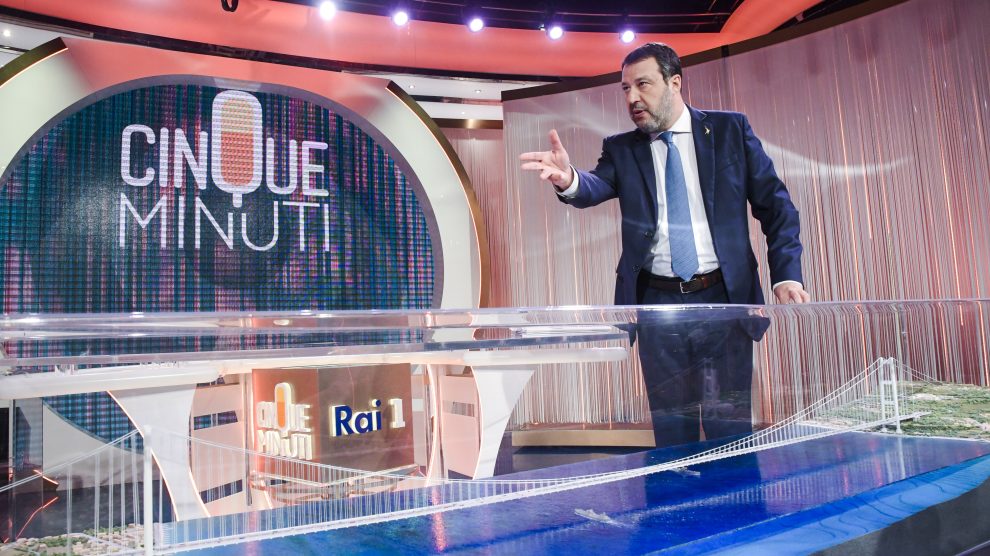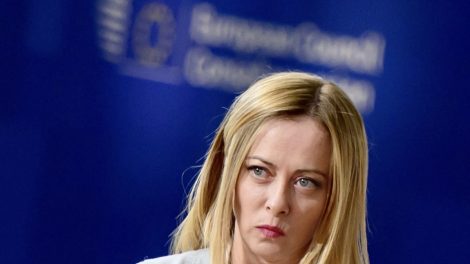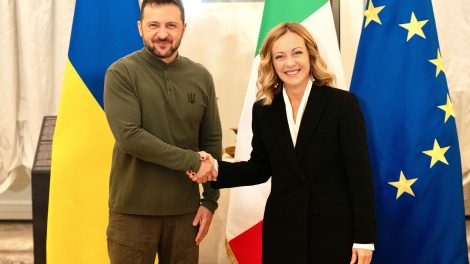Salvini heads to Asia. Next week, Italian Deputy Prime Minister and Infrastructure Minister Matteo Salvini will travel to Asia, with stops in Japan and China, his office announced on Monday.
- The mission—first announced earlier this year—was initially slated for May.
From Tokyo to Akashi. Salvini will arrive in Tokyo on Monday and stay until Tuesday morning for official meetings.
- He’ll then head to Osaka to attend the Expo, before visiting the Akashi Kaikyō Bridge on Wednesday.
- Spanning 3,911 metres, it’s the second-longest suspension bridge in the world.
- The structure was built by the Japanese company IHI Corp, with whom Salvini is reportedly keen to connect, as reported by Il Foglio.
- This aligns with his revived push to build the long-contested Strait of Messina Bridge project—now framed within NATO’s 5% defence spending target, thanks to a budgetary workaround that allows strategic infrastructure to count as a security investment.
- Once a critic of EU rearmament plans, Salvini, leader of the far-right eurosceptic League party, has changed tone.
- “If we include strategic infrastructure works among security spending, it makes sense,” he said, nodding to the proposal spearheaded by Commission President Ursula von der Leyen.
Beijing, then Shanghai. On Thursday, Salvini will land in Beijing, followed by a stop in Shanghai on Friday—mirroring Prime Minister Giorgia Meloni’s 2024 visit, which aimed to revitalise the Italy–China Global Strategic Partnership after Rome opted not to renew its 2019 Belt and Road MoU, signed under then-PM Giuseppe Conte.
- At the time, Salvini was Deputy PM and Interior Minister in the Five Star Movement–League coalition government that inked the BRI deal.
- Ahead of this new trip, he met with Chinese Ambassador Jia Guide on 25 June to prepare—an encounter publicised by Beijing but not shared on Salvini’s typically busy social media.
- This stands in stark contrast to his public announcement of a Monday meeting with Tilman J. Fertitta, the newly arrived US Ambassador to Italy.
A changing tune. Gone are the days of Salvini holding a “We Stand with Hong Kong” sign outside the Chinese Embassy in Rome.
- That was on 2 July 2020, just one day after Beijing-imposed National Security Law came into force in Hong Kong, when he urged Italy to speak out against Xi Jinping’s regime.
- Fast forward to 3 September 2021, Salvini visited the Chinese Embassy to discuss Afghanistan’s collapse with then-ambassador Li Junhua, now a UN Deputy Secretary-General overseeing economic and social affairs.
- On 4 June this year, Salvini marked the Tiananmen Square anniversary on his social media channels: “Thirty-six years on, the courage of those who stood up peacefully for rights and democracy still speaks to the world. Long live freedom. Always.”
- Notably, there was no mention of “Communist regime” or “dictatorship” that he used to describe China.
Infrastructure role models. Today, China is no longer just a concern to Salvini—it’s a model.
- That’s the impression Salvini gave in January, during the Lunar New Year reception at the Chinese Embassy in Rome, where he was the guest of honour.
- It was his third such appearance, and he praised China’s infrastructure capabilities as a source of inspiration.





